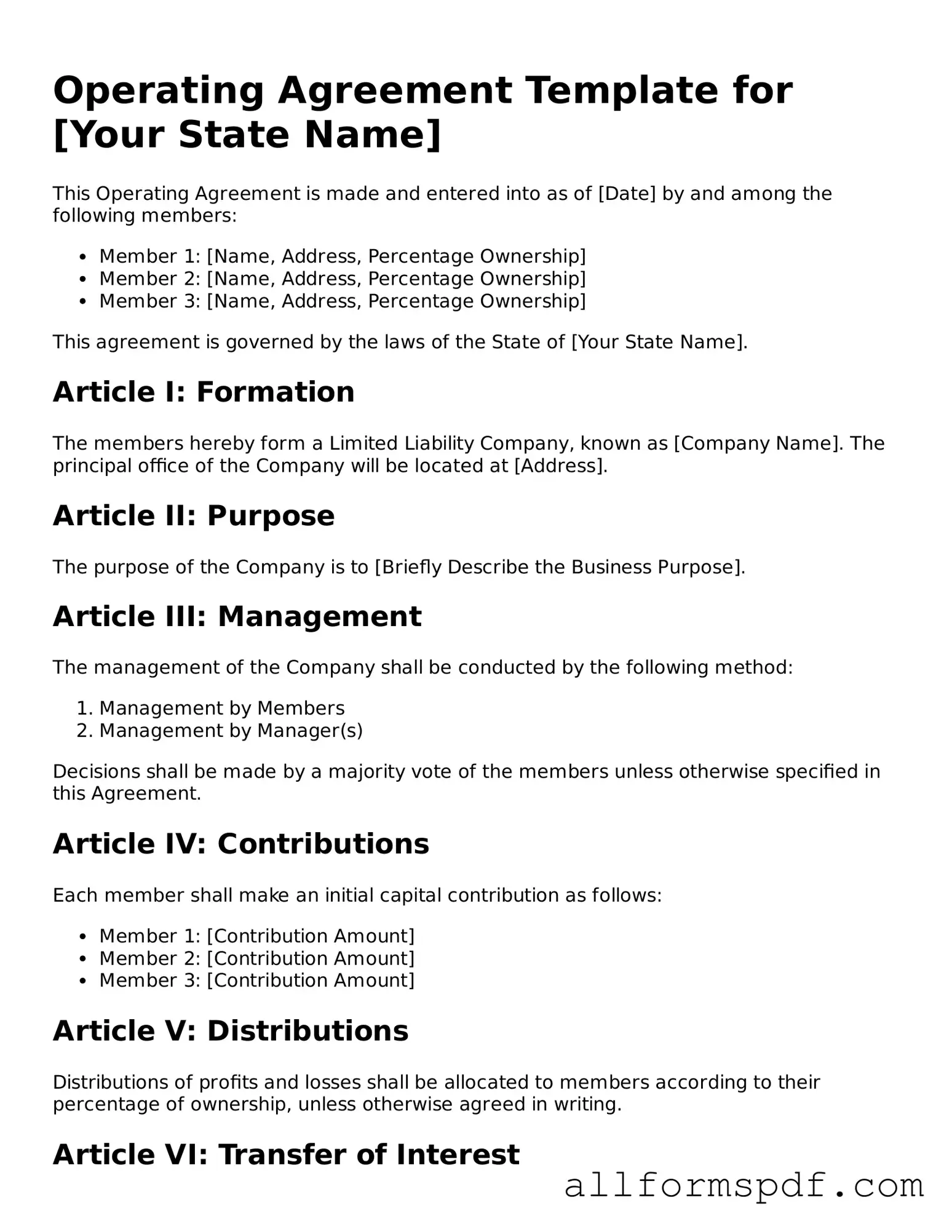Filling out an Operating Agreement form is a crucial step for any business entity, particularly for LLCs. However, many individuals make common mistakes that can lead to complications down the line. Understanding these pitfalls can save time, money, and stress.
One frequent error is not clearly defining the roles of members. An Operating Agreement should specify who is responsible for what within the company. Without clear definitions, misunderstandings can arise, leading to disputes among members.
Another common mistake is failing to outline the decision-making process. It’s essential to include how decisions will be made, whether by majority vote, unanimous consent, or another method. Without this, confusion can occur when critical decisions need to be made.
Many people also overlook the importance of including provisions for member changes. Life circumstances change, and members may leave or new members may join. An Operating Agreement should address how these transitions will be handled to avoid future conflict.
Inadequate attention to capital contributions is another mistake. Each member's initial investment should be documented clearly. If contributions are not specified, disputes may arise regarding ownership percentages and profit distribution.
Some individuals neglect to address profit and loss distribution. It’s vital to outline how profits and losses will be shared among members. This clarity helps prevent disagreements when it comes time to distribute earnings.
Additionally, not including a dissolution clause can be problematic. Life can be unpredictable, and having a plan for how to dissolve the business if needed is essential. This clause should detail how assets will be divided and responsibilities handled upon dissolution.
Another mistake is using vague language. Precision is key in legal documents. Ambiguous terms can lead to different interpretations, which can result in disputes. Clear, specific language helps ensure that all members are on the same page.
Some people forget to review and update the agreement regularly. As businesses evolve, so should the Operating Agreement. Regular reviews ensure that the document reflects the current state of the business and its members.
Finally, many individuals fail to seek professional advice when drafting their Operating Agreement. While it may seem straightforward, consulting with a legal expert can provide valuable insights and help avoid costly mistakes. A well-prepared Operating Agreement is an investment in your business's future.
